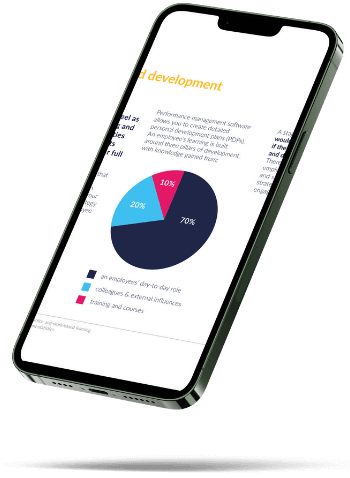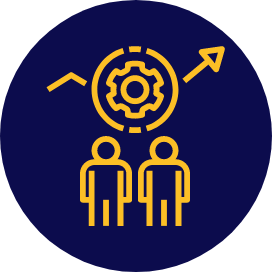Download your free guide to improving employee retention in 2025.
Discover the secrets to increasing your employee retention rate, improving job satisfaction and developing your top performers during a recession.
- A deep dive into how the employee experience impacts your retention rate
- How to build a positive employee experience into every stage of your HR strategy
- Success stories of industry-proven employee experience and retention initiatives
- Your free employee experience survey template to boost insight
Why employee retention is vital in 2025
A fragile global economy. A cost of living crisis. Recession fears.
And that’s just in the UK.
2025 will prove to be difficult for businesses across the globe.
To thrive in these tricky conditions, you need a strong team. High-performing employees, a productive environment and a shared vision and goals.
Retaining employees that deliver success is vital.
Business success and growth are impossible if your best employees leave.
More competition for the best employees
More employees than ever are deciding to shop around for a new job.
And the job market is candidate-focused right now. Even in a recession, companies are crying out for top talent to enable them to operate during the tricky months. And they’re willing to do whatever it takes to hire the best.
The best salary is no longer the only reason to stay in a job. Employee satisfaction is now a top priority when choosing where to work.
How will an employee be supported in a role? Will they find purpose in the work they’re doing? Will they trust their employer, and feel valued?
Encourage employees to stay with you. Improve their experience at every stage of your people management strategy.
Why employee retention strategies should be influenced by staff experience
To truly understand employee retention and how to improve it, an understanding of exactly what it includes is key.
It may seem like an obvious answer.
If employees are happy and engaged at work, they’re more likely to stay employed with your company.
But is that enough?
Now more than ever, it’s essential to factor the perceptions of your staff into all aspects of the employee lifecycle.
This starts with recruitment, to onboarding, to appraisals, and beyond. Making sure that your employees feel respected, valued and engaged are the foundations of creating an irresistible workplace.
Retaining top talent is necessary to perform at high levels and support growth. If your turnover rate is high, you’ll struggle to deliver consistently.
In this guide, you’ll discover how to improve employee retention by enhancing employee engagement throughout each of the core stages of the employment lifecycle.
With actionable hints, tips and success stories, we’ll help you to evaluate your current state, and assess where changes need to be made.
How an employee’s experience is different in 2025
Throughout the years, there have been various shifts in the working world. However, over the past decade, and certainly in the past two years, there has been a monumental shift in what a ‘standard working day’ looks like.
We previously covered how The Great Resignation was affecting businesses across the globe following the pandemic. However, less than one year later, working practices are still evolving.
Discover how the world of work is shaping your employee’s experience in 2022, and what you need to do to minimise the risk of losing employees.

The connection between employee turnover and negative experiences
Why do employees leave? It’s a question that HR professionals and business leaders ask regularly.
Unfortunately, there isn’t just one answer to the question. Instead, a multitude of micro-experiences can combine to create an overall negative employment experience.
This contributes to what can be described as a vicious cycle of poor staff experiences. In the guide, you’ll discover how one negative interaction or experience can start a snowball effect.
If you don’t take action to minimise these negative experiences, you risk operating with a fully disengaged workforce. An unhappy workforce is an unproductive workforce, limiting your business and its true potential for growth.

The true cost of poor job satisfaction on employee retention
Whilst job satisfaction is vital to maintaining a good employee retention rate, a negative experience can affect other areas of your business too.
A study by People Metrics found that highly engaged sales teams will sell 20% more than those with low morale. With such potential for sales growth, surely creating a positive experience for every team member is high on the agenda for CEOs and business owners?
Worryingly, a survey showed that only 22% of organisations understand the driving force behind staff disengagement levels. In 2021, 74% of disengaged workers were actively looking for new work opportunities, or open to hearing about them.
It’s clear that staff perceptions need to place higher on the agenda for every business. After all, retaining staff and maintaining a high-performing, enthusiastic workforce is a fundamental of business growth.

How to retain employees by improving their employment experience
In this section, we’ll address the importance of developing a strong company culture that will encourage employees to remain with your organisation.
It’s vital to address their experience at every stage of the employee lifecycle. We’ve covered each in detail, giving actionable advice to boost employee retention.
This includes:
Workforce planning
We cover how effectively planning your workforce can lead to better employee retention.
Employee engagement should be embedded into every aspect of your company. From the ground up, you should aim to instil a supportive and collaborative workforce.
With a focus on making your planning process more strategic, we provide the tools you need to build employee retention strategies before you’ve even started your hiring process.


Recruiting
Shaping your recruitment process to focus on the experience each new hire undergoes is key to improving employee retention.
Finding the right person for every role in your company is the key to improving retention rates. However, without a well-functioning recruitment strategy in place, you can struggle.
We share the best practice for creating an outstanding hiring strategy, which places potential new employees at the heart of every decision. This includes top tips on how to conduct the best job interviews, improve your employer brand and ensure that job adverts are accurate.
Onboarding
In this section, we explore the importance of a well-structured onboarding process. We’ll cover how your first interactions with new employees shape your ability to retain employees and reduce turnover costs.
Improving the micro-experiences which impact an employee’s initial impression of your organisation helps them start on the right foot. Making minor changes, and implementing your company values at each stage of their orientation soon adds up to a more well-rounded and supportive experience for employees.
Onboarding is your first chance to embed a sense of purpose around your company’s core goals, so we share tips and actionable advice to help your new employees start their journey with you on the best foot.


Performance management
The traditional annual appraisal process no longer meets expectations, with more reactive and transparent feedback a key factor in engagement and employee retention.
In this section, we cover the top three areas of performance management that you can focus on when aiming to improve employee retention. This includes:
- Improved feedback mechanisms
- Regularity of appraisals
- Awards and recognition
Learning and development
An important stage of the employee lifecycle to focus on when implementing employee retention strategies is what learning and development opportunities you offer your workforce.
Professional development can be the reason that employees choose to look for a new job. Training and development and learning new skills, whether that be structured through ongoing education or on-the-job training, helps to create a team of high-performing employees.
We focus on how career development factors into the employee retention rate, and how your business can improve your current strategy.


Succession planning
Minimising your risk of losing experienced employees can be achieved through an effective succession planning strategy.
In this section, we cover how you can demonstrate your dedication to supporting each employee’s chosen career path and their goals. Our guide highlights the importance of professional growth and leadership development in retaining employees successfully.
Compensation and benefits
Although it is often thought of as the defining factor in employee retention, an employee’s annual salary isn’t the only benefit your organisation needs to consider.
This section covers the strategies you can implement to improve company culture through a range of benefits. Whether it’s a healthy work-life balance, competitive compensation or access to enhanced tools and resources, you should consider a broad range of
We also demonstrate a successful tip to improve your bonus structure. Our strategy fosters a better sense of employee collaboration and can be a powerful incentive in your overall benefits package.


Skills gap analysis
For the final stage of the employee life cycle, we cover how to use your skills gap analysis to improve the overall experience for your workforce.
An employee-centric culture of development carries out ongoing skills audits. If you’re implementing changes throughout the lifecycle, it’s vital that you track the improvements as a result.
Understand, react, improve: Assess current state to improve employee engagement and retention

A proven staff experience survey template to boost insight
Making improvements can be difficult if you don’t know where you currently stand. Are your employees engaged? Or are there areas in which you can improve?
To help kick-start the process, we’ve prepared a tried and tested staff experience survey template for you.
It features 30 questions that provide detailed and actionable insight into the feelings of your workforce.
It’s split into six distinct categories that explore the broad spectrum of an employee’s experience with your company:
- Empowerment and productivity
- Culture and values
- Role and responsibilities
- Teamwork and collaboration
- Learning and development
- Feedback and recognition
However you choose to use this template, we encourage you to document current workforce sentiment. Compare this to future survey results to track the results of improvements to your current employee perceptions.
